10 Weeds With Purple Flowers: How to Get Rid of Them
Purple is generally considered one of the most desirable floral colors, so weeds with purple flowers are sometimes tolerated in a way most weeds aren't. The decision to remove or keep them really comes down to this: do they have enough drawbacks to warrant removal in spite of their beauty? Homeowners may decide to let them grow, despite their "weed" label.
To determine their pros and cons, it is first necessary to identify the weeds correctly and learn their names, so that you can conduct research on them. We introduce you to 10 weeds with purple flowers below, with tips on identifying them and a sampling of their pros and cons.
Purple Violet
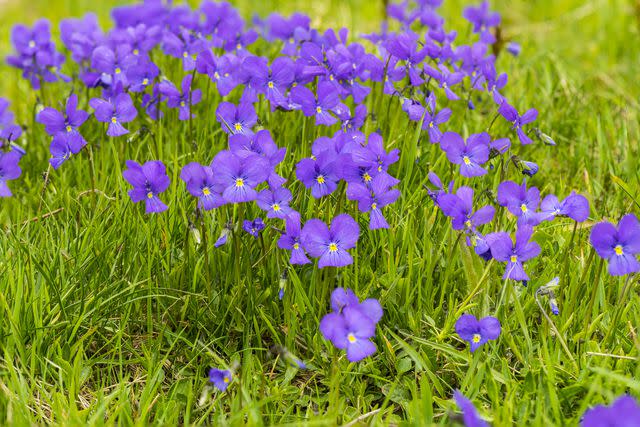
Jean-Paul Chatagnon / Getty Images
Wild violets provide color in the septic drainfield and won't cause harm.It's no wonder that purple violets are so pretty: they're relatives of pansies (Viola x wittrockiana). These spring-blooming perennials are compact plants with lovely flowers. Standing just 4 to 6 inches high, purple violets bear lavender-purple flowers, and the leaves are waxy and heart-shaped.
Many people leave wild violets alone when they're growing on the lawn. For those who value their appearance, they have no drawbacks. Fall is the best time of year to try and kill off wild violet in your lawn. A typical weed killer will do the trick with this plant.
Name: Purple violet (Viola sororia)
Light: Partial shade
Mature Size: 4 to 6 inches tall
Pros
Attractive blooms
Compact growth habit
Cons
Difficult to eradicate if you decide you don't want them
Gill (Creeping Charlie)
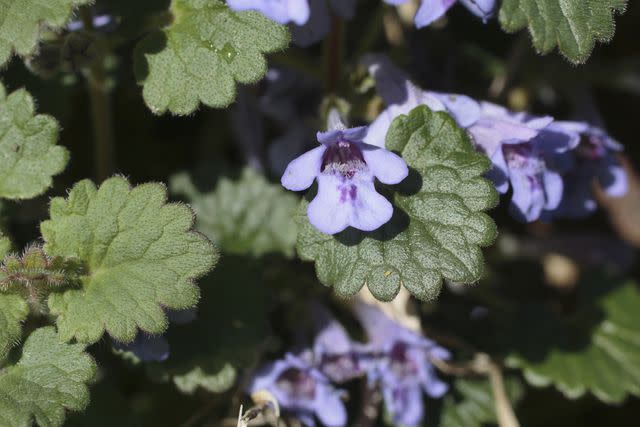
Whiteway / Getty Images
This common lawn weed has a number of alternate common names, including "creeping Charlie." This vine-like perennial spreads from seeds, roots (or rhizomes), and stems that root at the nodes. The scalloped leaves are one of its better-identifying features, along with its square stems. The bluish-purple flowers are funnel-shaped and bloom from mid-spring to early summer.
The shallow-rooted weed spreads rapidly but can be eradicated with regular maintenance. Hand-pull and smother with cardboard and weed fabric in the fall and winder. If you like gill, seek the cultivar, 'Variegata,' which is more attractive and less invasive.
Name: Gill (Glechoma hederacea)
Light: Partial sun to shade
Mature Size: 2 feet long
Pros
Lovely fragrance
Cons
Invasive, spreads to flower beds
Bugleweed
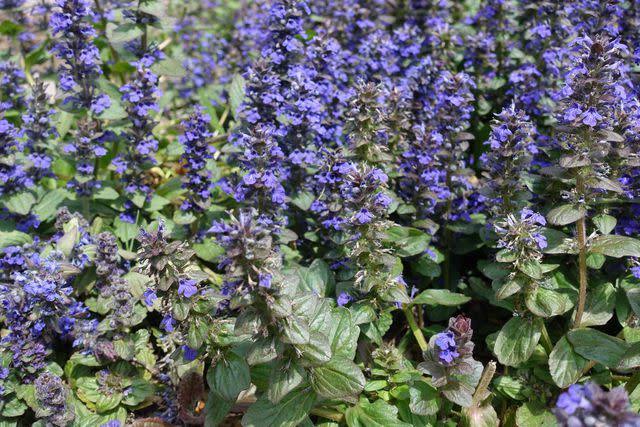
apugach / Getty Images
Bugleweed is a perennial, weedy ground cover that spreads via stolons. It bears glossy, dark-green leaves and blue, violet, or purple flowers that grow in spikes. Bloom time is mid- to late spring. It's eradicated by using a commercial or homemade weed killer—vinegar and water does a good job of killing the plant off.
The species plant probably deserves the weed in its name, but there are a number of cultivars that are attractive and less invasive, such as 'Chocolate Chip,' which sports even darker leaves than the species plant.
Name: Bugleweed (Ajuga reptans)
Light: Full sun to partial shade
Mature Size: 9 inches tall
Pros
Flower spikes are moderately showy
Cons
Aggressively spreads
Bittersweet Nightshade
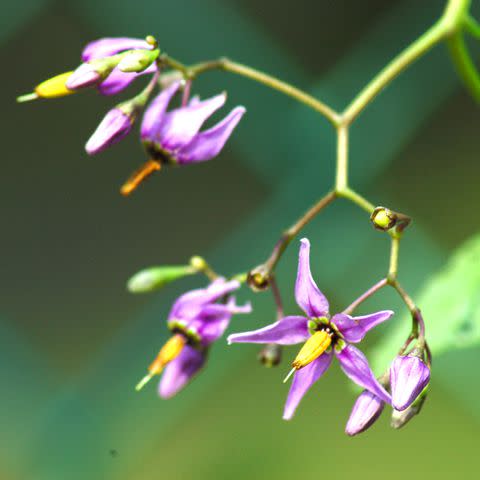
Unrelated to oriental bittersweet (Celastrus orbiculatus), bittersweet nightshade, like its namesake, is perennial and will climb if it finds support. For example, it is often seen climbing a chain-link fence in a neglected corner of a property. It blooms throughout the summer. The flowers occur in clusters along branches, and the leaves are dark green and have the shape characteristic of plants in the nightshade family (such as tomatoes).
Small amounts can be controlled by weeding and pulling by hand. While the berries are interesting, they don't make a strong enough case to keep such a toxic plant, especially if children play in the yard.
Name: Bittersweet nightshade (Solanum dulcamara)
Light: Full sun to partial shade
Mature Size: 8 feet tall
Pros
The staggered ripening of the berries makes for an interesting visual effect
Green, yellow, orange, and red berries on the same plant at the same time
Cons
All parts of the plant stink when crushed
All parts of the plant are toxic
Canada Thistle
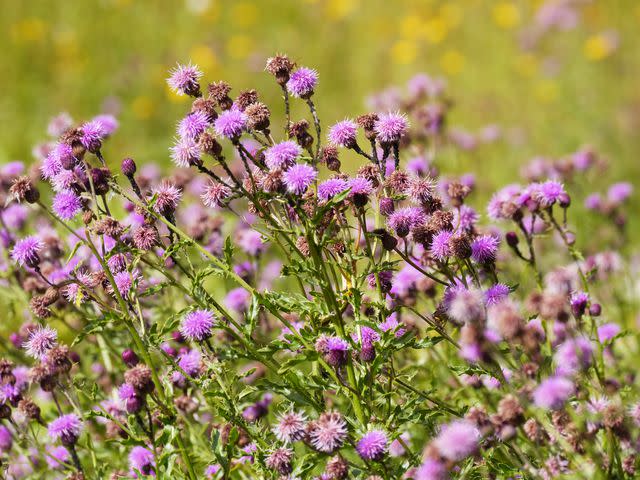
Moelyn Photos / Getty Images
This perennial is native to Europe and invasive in North America. Its leaves are lance-shaped, lobed, and have spines along their margins. Its flower buds form in clusters and are shaped like teardrops.
This erect plant spreads aggressively, both by seed and roots. There is no reason to keep this weed, despite its floral color. To get rid of Canada thistle, mow repeatedly to keep the flowers from spreading seeds.
Name: Canada thistle (Cirsium arvense)
Light: Full sun to partial sun
Mature Size: 2 to 5 feet tall
Pros
None (unless you are an expert in wild foods or natural medicine)
Cons
Aggressively spreads
Spines and leaves are sharp and pointy
Bull Thistle
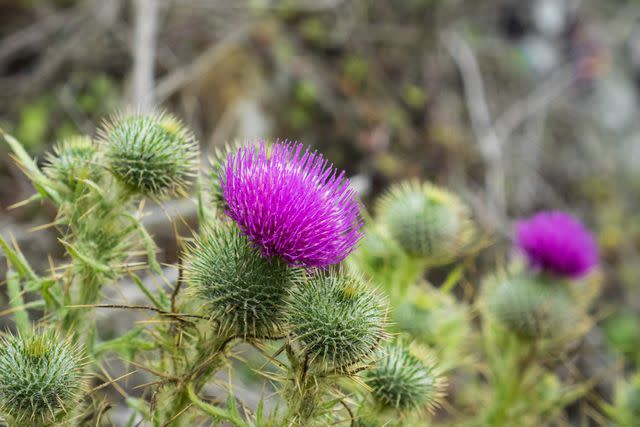
Andrei Stanescu / Getty Images
Another upright weed that is prickly along the leaf margins, bull thistle blooms in summer and early fall. Bull thistle spreads by seed alone, not roots, but is still considered invasive. Mow repeatedly to prevent seed spread, or hit them with glyphosate if they are in an area without desirable grass.
If it weren't invasive, it would be tough to make a call on bull thistle. It attracts butterflies, hummingbirds, and bees, plus birds such as goldfinches eat the seeds. If you like the look of thistle, seek a native alternative.
Name: Bull thistle (Cirsium vulgare)
Light: Full sun
Mature Size: up to 3 feet tall
Pros
More attractive than Canadian thistle
Robust plant reminiscent of a cactus
Attracts pollinators
Cons
Spines are prickly and sharp
Invasive
Tufted Vetch
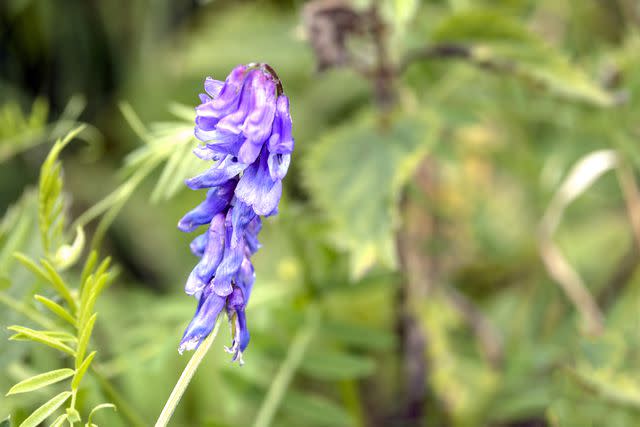
Pauline Lewis / Getty Images
Also called "bird vetch," tufted vetch is easy to identify by its flowers, alone. They occur in a raceme on just one side of the flower stalk. The leaves of this perennial are compound (with anywhere from five to twelve pairs of leaflets).
As a climbing plant, it also puts out tendrils that wrap around anything they can find for support. This is most often planted by farmers for forage, and you'll probably be interested in tufted vetch only if you have agricultural interests. To eradicate, gently pull on the stem to detach the roots from the ground.
Name: Tufted vetch (Vicia cracca)
Light: Full sun
Mature Size: 1 to 3 feet
Pros
Makes a good cover crop, as it is a nitrogen fixer
Cons
Not showy or attractive
Purple Loosestrife
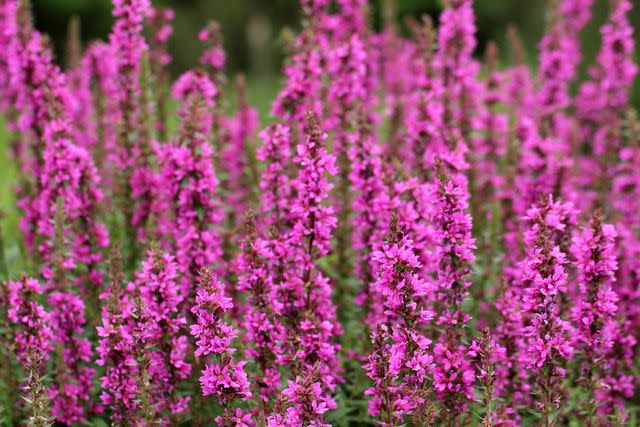
fotolinchen / Getty Images
Purple loosestrife is a branching perennial with an upright habit. It is considered one of the worst invasive plants in North American wetlands. The magenta-purple flowers have five to seven petals and occur on spikey clusters. The leaves are lance-shaped and opposite.
Fortunately, most homeowners won't have to decide between keeping or removing this lovely weed, since it is a wetland plant. If you do spot it, you should spray commercial weed killer in the summer while the plant is flowering.
Name: Purple loosestrife (Lythrum salicaria)
Light: Full sun to partial shade
Mature Size: 4 to 10 feet high
Pros
Very beautiful flowers
Cons
Highly invasive
Blue Vervain
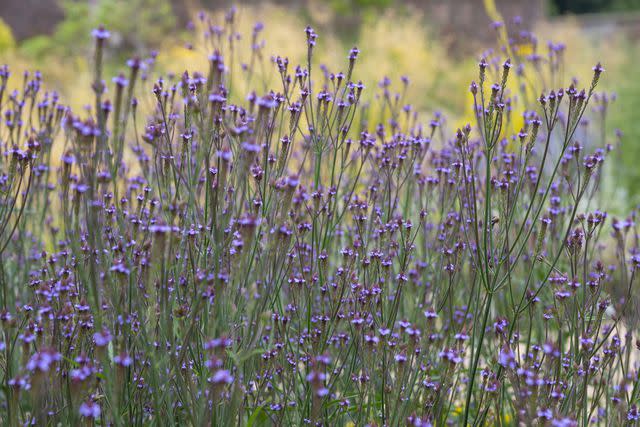
R A Kearton / Getty Images
Blue vervain, like purple loosestrife, is a branching perennial with spikey flowers. Unlike purple loosestrife, it is native to North America. Its lance-shaped leaves are opposite and have toothed margins. It's a member of the verbena family, which includes several plants popular in gardening and landscaping.
Blue vervain isn't nearly as showy as purple loosestrife, but it does serve as an alternative to the latter if you're looking to plant a wet area. If you're looking to get rid of it, spray herbicide in the summer while it is blooming.
Name: Blue vervain (Verbena hastata)
Light: Full sun to partial sun
Mature Size: 2 to 6 feet high
Pros
Native status
Cons
Will need additional irrigation, unless grown in a wet zone
Common Heal-All
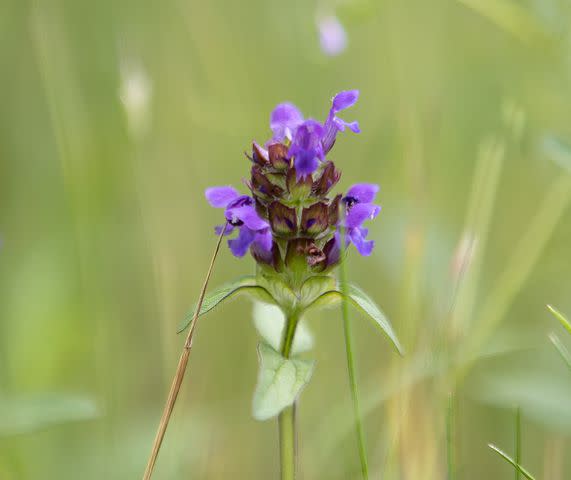
Wirestock / Getty Images
Common heal-all was traditionally used as medicine, thus it is often referred to as an herb. This creeping perennial belongs to the mint family. It has square stems and a short, erect flower spike. The flowers, which bloom in late spring and early summer, occur at the very top of the plant in a tight cluster.
Because this plant has a long life span, its entire root system needs to be removed to prevent it from growing again. This could take several seasons to accomplish, but spray herbicide and hand-pull until the root system is eradicated.
Name: Heal-all (Prunella vulgaris)
Light: Partial shade
Mature Size: 12 to 16 inches tall
Pros
Native status
Cons
Not very showy
Read Next: 35 Common Weeds in Lawns and Gardens: Identification & Control

